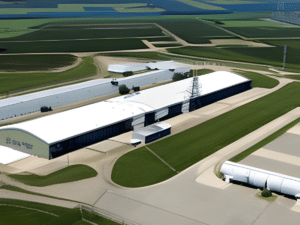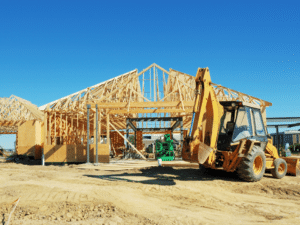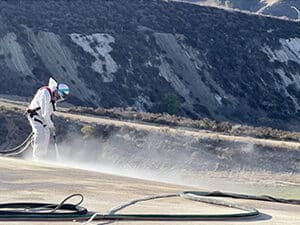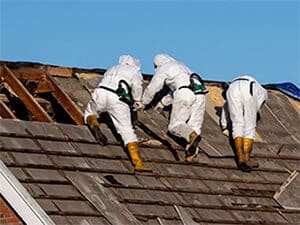Managing Disturbed Asbestos for Renovation and Demolition Projects
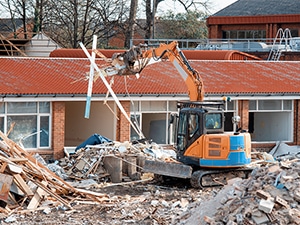
Decades since it was identified as a serious health risk, the threat of disturbed asbestos is still far from remote. Thousands of commercial products used asbestos well into the 1970s, 1980s and 1990s, and many buildings still contain some of the most dangerous types.
It’s a hazard that construction managers and contractors must confront in advance of construction, demolition or renovation that has the potential to damage or disturb asbestos that can become airborne. Inhaling asbestos fibers is a serious health threat associated with an increased risk of lung cancer, and other asbestos-related diseases.
“Asbestos is probably one of the most regulated hazardous materials worldwide. A detailed plan for assessment, sampling, identification and removal of asbestos-containing building materials is critical for both safety and compliance.”
– Omega President and Project Director Steve Rosas
As a result, the management of asbestos containing materials that have been disturbed or damaged – or are likely to be disturbed or damaged in the process of renovation or demolition – comes with additional regulatory safeguards.
Plan Pre-approval & Assessment Prior to Renovation or Demolition
Asbestos is most often found in structures built prior to 1980-82, but can still be found in roof mastics, floor mastics, fireproofing materials, and sealants in buildings constructed in the 1990s and early 2000s. Buildings from the 1940s through 1970s can contain asbestos in many different building materials, and often require more careful and rigorous removal.
Under California’s South Coast Air Quality Management District (SCAQMD) Rule 1403 an asbestos survey conducted by a Cal/OSHA-certified asbestos consultant and submission of a notification by a Cal/OSHA registered asbestos contractor to SCAQMD are required prior to beginning the work.
Pre-approved cleanup plans and specific techniques and engineering controls must also be in place – among other requirements prior to clean-up and removal activities.
“Asbestos is probably one of the most regulated hazardous materials worldwide,” said Omega President and Project Director Steve Rosas. “A detailed plan for assessment, sampling, identification and removal of asbestos-containing building materials is critical for both safety and compliance.”
Managing Asbestos on School & College Campuses
Across Southern California, the large number of schools and college campuses under renovation has kept certified asbestos consultants busy. Many campus buildings across the state were constructed during an era of widespread use of asbestos containing building materials.
For asbestos materials that are still intact and disturbed asbestos is not present, an operations and management (O&M) plan can be developed to manage it in place, with periodic inspection of conditions, and air quality assessment to determine if asbestos has become airborne.
The 1986 Asbestos Hazard Emergency Response Act (AHERA), which applies to all public school districts and nonprofit private K-12 schools, requires reinspection of any asbestos-containing materials every three years.
The Environmental Protection Agency (EPA) also mandates training for school custodial and maintenance staff whose work puts them at risk of disturbing asbestos containing building materials.
Identifying the Presence & Condition of Asbestos Containing Materials
An asbestos assessment or survey is conducted to assess suspect asbestos-containing materials by collecting samples for analysis to determine their concentration of asbestos, prior to construction related activities such as renovation or demolition, or to identify potential hazardous materials that must be disclosed as part of the sale or refinancing of a building.
If there are plans for construction, renovation, demolition, or any other activity likely to disturb the asbestos-containing material, or if the material is likely to become friable during construction-related activities, then the appropriate response action, which can include enclosure, encapsulation, repair or removal, should be implemented to control hazards and protect human health.
Even without the disruption of asbestos-containing materials by construction or demolition crews, asbestos materials can become damaged. Sources of asbestos disturbance may include:
- Earthquakes
- Use of the building, vibration, settling
- Leaks in pipes
- Normal wear and tear (aging of building)
- Occupant activities, e.g., bumping or jostling asbestos-containing pipe insulation in corridors
- HVAC installation, repairs or operation
Environmental Experts for Reliable Asbestos Management
Omega Environmental provides a variety of solutions for assessing, identifying, and managing, asbestos containing materials, including AHERA training, assessment, mitigation and the development and oversight of O&M plans, development of asbestos removal specifications, project oversight and air monitoring during removal activities.
To learn more about our services for the safe management of asbestos containing-materials on your next renovation or demolition project, reach out to one of our team members.




